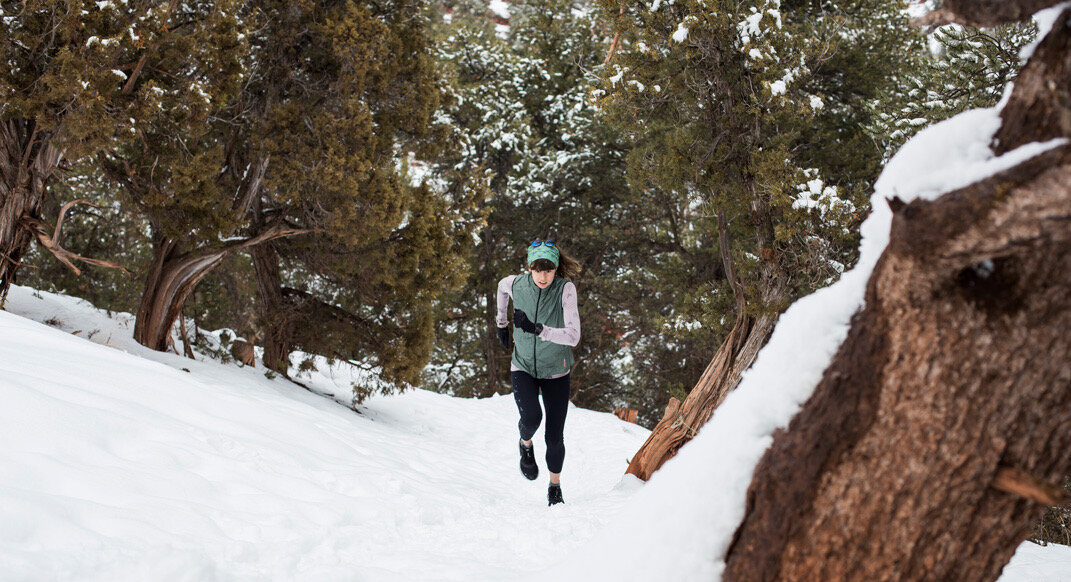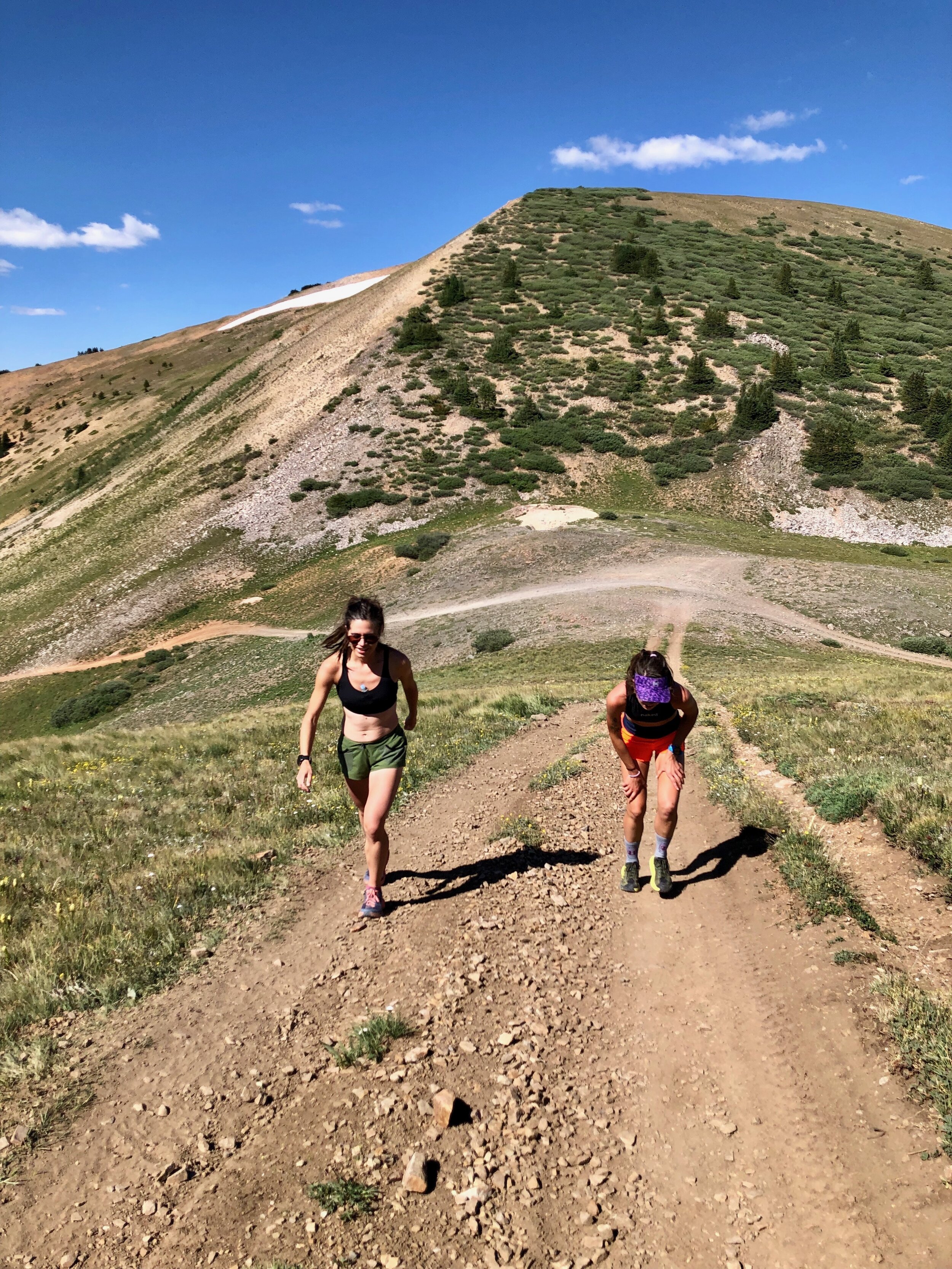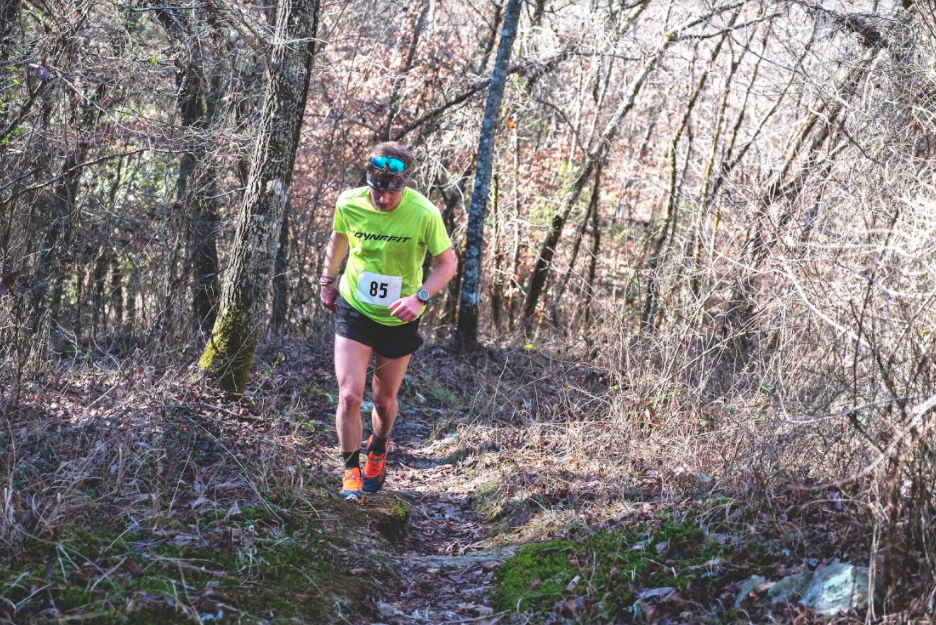Become Kween (Or King) Of The Mountains
The Uphill Paradox
We live in the mountains for one simple reason: we’re drawn to the vertical movement that the trails and high peaks provide. Whether on skis or feet, there’s just something about moving fast and efficiently uphill towards a summit or high mountain pass that captures the imagination.
What’s the best way to get legs that will let you rocket to the mountain tops? Like everything in training, it’s complicated, but building speed on the flats (yes, boring roads, bike paths and smooth trails) is the best way to get better at climbing.
Though it may feel counterintuitive, athletes who focus too much on climbing at the exclusion of developing speed tend to slow down long-term. Last winter, in the lead up for The Golden Trail Series and specifically the epic Skyrace Sierre-Zinal, Kilian Jornet used blocks of flat running and well-rounded training based on speed work to help improve his climbing. He only did one specific uphill workout each week, and lots of flat speed work combined with easy running (on flats) and some longer mountain runs on the weekend. A well-rounded plan that emphasized fun weekend adventures in race-like terrain helped him gain speed on the ups.
Shouldn’t mountain runners spend all their time in the mountains? Short answer, no. The longer answer is the rest of this article.
Climbing on trails tends to involve obstacles like rocks and roots and switchbacks, all of which reduce power output and mechanical efficiency (think, how hard you’re working compared to how fast you’re going). If you’re continuing to go up and down all day long, you will get really good at moving slowly. Climbing uphill involves greater muscle activity, and without balanced training and focus on speed, ends up slowing runners down.
In an ideal world, we’d all train a bit like Kilian. But, with jobs, families and no Norwegian fjords in our backyards, we have to take some liberties with his regimen. A basic plan with a Monday rest day might look like this: Tuesday easy day involving a bit of climbing on a route of your choice with time at intensity (for example 4 x 30-sec hills). Wednesday, our workout day, would be all about building speed and running economy on the flats with lots of easy miles before and after the workout like (3 miles easy, 12 x 1 min fast/2 min easy, 3-4 miles easy). Thursday would be an easy, or optional recovery day based on feel. That run can be on or off trails since the point is to recover from your big workout. Saturday and Sunday are perfect for exploring on race and goal-specific terrain. Look for smooth, fast terrain for your uphill strides, crawling over roots and rocks won’t do much for your speed, strength or economy.
Long runs would be on terrain similar to where you’re racing with some opportunity to get feisty with climbs during the week as well. Athletes who live in flat areas have had a lot of success with hill repeats and longer treadhills to get ready for mountain events. Sometimes athletes will report feeling crushed by climbs in races, when in fact what they’re feeling is inadequate preparation for downhills. If you’ve ever heard someone complain of blown-out quads early on in a race, that’s likely what’s in play. Eccentric muscle movement, meaning lengthening under load, is developed by drilling downhills and some light strength work. When training, be sure to run downhills with purpose and push intentionally in the six to eight weeks leading up to an event.
Economy Is Still The Priority
Improving running economy, or how much energy you have to put in to get a specific output level, is critical for building climbing speed. The best climbers are often the strongest, most efficient runners with just enough uphill specific training for their event. Runners who are efficient on flat surfaces are also efficient on climbs and downhills. It’s science.
>
“The best climbers are often the strongest, most efficient runners with just enough uphill specific training for their event. ”
Climbing ability can improve as an athlete adapts to climbing, but that skill will often max out relatively quickly, especially compared with running economy, which can improve for decades. If you run hills during your normal training week, and don’t go looking for killer vert at the exclusion of speed, you’ll be fine.
However, efficiency matters slightly less on steeper grades because the movement becomes different than actual running (hello, power hiking!). Economy is activity-specific, so if you’re good at moving horizontally (running!) you’ll also be good at running uphill (which is a combination of horizontal and vertical movement). The big differences are that uphill running requires a higher step frequency, more mechanical work and power output at the joints as well as more muscular activity, all of which you can hone through shorter hill work and climbing-specific strength exercises like step-ups.
Long-term focus on flat running speed and economy plus just enough climbing to get ready for the specific biomechanical demands of hills is the approach that works for most runners.
Fitness and Form
Remember that the best climber is usually the best runner, with a dash of vert-specific training under their belts. Your training should mostly be geared towards improving your running. Start with building a strong aerobic base with lots of easy effort runs, and some cross-training if that makes you happy. Skimo and ski-touring can be useful for helping sustainably build an aerobic base in the off-season but aren’t truly that effective at building climbing-specific strength because of how movement specific economy is. Cycling, mountain biking or skiing can be a fun way to improve fitness a bit, but don’t count on them to make you a superstar runner. Use them to enhance your running program and add variety to your week to prevent burnout. While baking donuts might make me a better baker overall, to bake an AMAZING cake, I should practice mostly baking cakes.
>
“Think about the muscles you would use to twerk; those are the same muscles you want to use to go uphill.”
The ideal uphill form (Start around 8 min in for this video) is a forward lean, with your center of gravity tilted forward from the ankle, with your shoulders back to keep your diaphragm open. Try to mimic the grade you’re running with your body. If you’re running a five percent grade, lean forward five percent. We lean forward to keep our momentum going up the hill and to activate our glutes. Think about the muscles you would use to twerk; those are the same muscles you want to use to go uphill. If you’re running up a steep ski slope, you’ll be as far forward as you can without collapsing your chest and diaphragm. Poles help! Aim for short, relaxed strides. Good running economy will naturally lend itself to a high cadence here. Take short, delicate strides to minimize effort.
Run or Hike By Effort, Not Pace
Everyone’s a little bit slower on the hills. Get comfortable going slower and adjusting your effort to keep a steady, consistent effort (not pace!) over the course of a climb. Unless the race is a half marathon or shorter, you should stay under lactate threshold, the effort you could sustain for about an hour. If you go over (like runners who sprint up the first hill of the Leadville Silver Rush 50 to snag a gold coin!) it can be hard to recover. Imagine the climbing effort you could sustain for an hour, which is probably pretty chill. For most of us, that’ll include some power hiking too. The goal is to keep your effort level from having peaks and valleys that mimic an elevation profile! Even on steep climbs, we want smooth effort!
You Probably Rock At Hiking
>
“You don’t need to spend a ton of time hiking to get ready for a big event. ”
Hiking is more efficient at steep grades and slower speeds, and most people dipping their toes into ultra distances rely on it as an essential tool for longer races. Unlike running, you don’t need to spend a ton of time hiking to get ready for a big event. Hiking involves a lower output than running, which means you likely already have the aerobic and muscular tools to be a champion power hiker. When it comes to power hiking, less is more. Balanced training should be mostly runnable climbing with a couple of power hiking opportunities in the month leading up to a marathon or 50k event with steep climbs and several sessions over power hiking to prepare for longer, more mountainous 100k or 100-mile races over an 8 week training period before race day. Saturdays are great for power hiking!
To put some power in that hike, lean forward and use your hands to push against your quads, or swing them with purpose on less steep climbs. If you plan on using poles in a race, make sure you practice with them. Remember that power hiking isn’t a rest, it’s an opportunity. Maintain a consistent effort level, engage your butt, and hike on!
>
“Hiking isn’t a rest, it’s an opportunity.”
Strength
Strength work can help improve running economy and include musculoskeletal stress that mimics the stress of climbing. We like athletes to do the mountain legs circuit three times a week, and athletes doing really vertiginous races can boost the workout from three minutes to five. Strength work is important and helpful, but it’s not a silver-bullet for climbing ability.
If you plan on using poles, make sure your arms are ready for that stimulus (skiers will be ahead of the curve, here!). You don’t need to Hulk out, but a few tricep, bicep and shoulder strength circuits (dips, curls and pushups) will help your upper body be race-day ready.
To sum up, if you climb all the time, you’ll probably plateau or regress sooner or later. If you focus on economy and improved running in general, that will have huge payoffs no matter the terrain.



